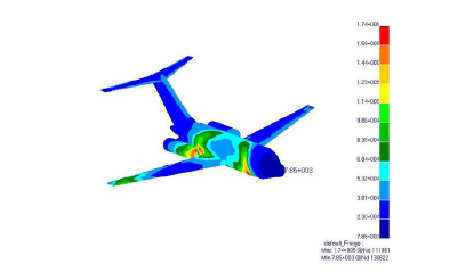
Info
...
Coordinator
...
Partners
...
Summary
The developments of computational mechanics in the last two decades have permitted the simulation of explosion phenomena in various field of applications.
The attention is here restricted to aeronautics. To the best of the authors' knowledge there is no results available study on the evaluation of the loadings that an explosion in air, causes on a flying aircraft as well as of their effects on the deformable structures. Such analysis could permit the following interesting tasks: to evaluated the loads on the aircraft for various initial position of the explosions for a various amounts of the explosive charge; to make a better design of the aircraft with respect to explosion phenomena; to simulate aircraft accident in order to understand their causes.
The present work evaluates the possibility of using a commercial software to simulate the loading that an explosion induces on a flying, flexible aircraft. MSC.Dytran software has been employed. The results obtained by a computational simulation of the impact of shock waves due to explosion on a flying flexible aircraft of commercial type are described. An explicit, three-dimensional dynamic, nonlinear and coupled analysis has been conducted by means of the software MSC.Dytran. A Lagrangian mesh has been used for the structural parts while a Eulerian domain is used to for the surrounding fluid. The fluid dynamic solver uses a Eulerian approach and employs a Finite Volume Method (FVM) to discretize the governing equations.
A sample results is given in figure. The loading on full aircraft due to schock wave explosion are depicted in this picture. A presentation of methodology and results can be found here.
MUL2 Investigators